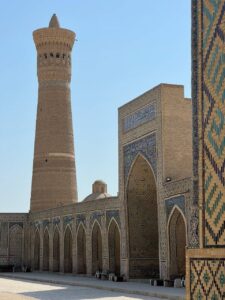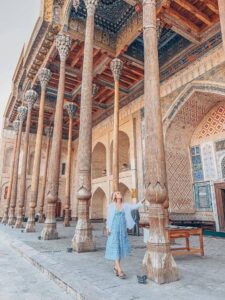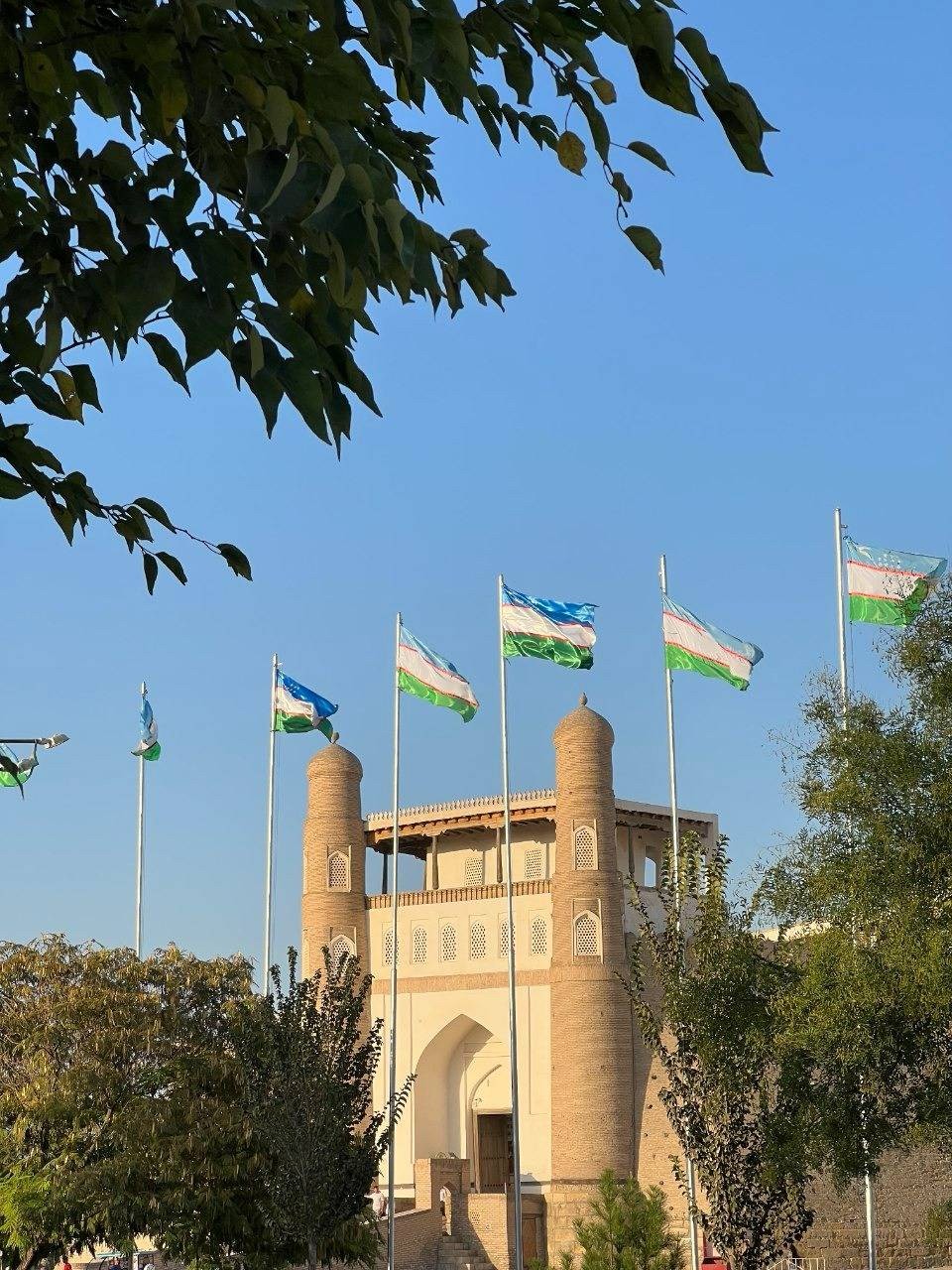Despite UNESCO’s concerns, Uzbekistan is pushing ahead with plans for a big tourist complex next to the historical center of Bukhara, a jewel of medieval architecture in Central Asia.
Workers are already clearing areas for “Eternal Bukhara,” a tourist facility that will boast a museum, teahouses and restaurants offering national cuisine, craft stalls and workshops for gold and blacksmithing, embroidery, wood carving, pottery, and painting. The design intends to evoke the urban layout of past centuries, with traditional drainage systems and ponds.
All this construction would happen in part of the buffer zone surrounding the old city, potentially increasing the flow of tourists, but also putting more pressure on the integrity of the ancient site. Bukhara, a destination on the Silk Route that is more than 2,000 years old, contains the tomb of the ruler Ismail Samani, an emblem of 10th century Muslim architecture, as well as many ancient madrasas, or Islamic schools, according to UNESCO.

Traveler Veronika Karobitskaya looks toward the Kalyan Mosque in the ancient city of Bukhara, Uzbekistan. Karobitskaya, a Russian citizen, visited Bukhara in September 2022 and said she was “completely fascinated” by the city’s heritage. Photograph: Veronika Karobitskaya.

A view of the Kalon Minaret, a major landmark in Bukhara. Photograph: Veronika Karobitskaya.
The historical center of Bukhara, registered on the world heritage list of the U.N. cultural agency in 1993, comprises 216 hectares and its buffer zone comprises 339 hectares.
Some demolition has begun on the 32.6 hectares earmarked for the tourist complex, including at a sports stadium. Last year, some Bukharan residents appealed to the government not to dismantle the stadium, saying 1,200 children and 50 coaches use the stadium every day.
A total of 29 buildings and facilities are slated for demolition. They include the Bukhara government building, designed by Uzbek architect Richard Blaise and built in 1980, as well as secondary and music schools, and social centers. Local authorities have tried to reassure residents who say they wish the tourist complex could be built further from the historical center.
“It should be noted that on the basis of this project, it is planned to create a green park for residents and guests of Bukhara to walk in two-thirds of the area planned. In this regard, the trees in the area established earlier in accordance with the ´Green Bukhara´ program in the project area will be fully preserved and will be enriched as a new garden landscape,” the regional administration said in a report.
According to UNESCO, however, there are laws and urban planning codes that “provide protection of monuments of cultural heritage and their buffer zones.”
Sara Noshadi, director of UNESCO’s office in Uzbekistan, said on X, formerly Twitter, on March 2 that the U.N. agency is closely monitoring the Bukhara’s ancient site and was aware of local concerns about “potential construction plans” in the buffer zone.

Russian tourist Veronika Karobitskaya, who visited Bukhara in 2022, stands next to the carved wooden columns of the Bolo Haouz Mosque in the old city. Photograph: Veronika Karobitskaya.
“The World Heritage Centre hopes that the authorities will comply with their commitments to the World Heritage Convention, and that they will not carry out any demolition/construction project without the prior notification and assessment of the World Heritage Committee, whose next session will be held in July 2024,” Noshadi said.
She added that UNESCO is ready to provide expertise and assistance to preserve the site.
“Why are construction works being carried out in the UNESCO buffer zone without UNESCO’s permission?” Nikita Makarenko, an Uzbek journalist and commentator, wrote on X.
Enter Engineering, a major construction company operating in Uzbekistan, is one of the main investors in the Eternal Bukhara complex, the Kun.uz media outlet reported citing Zuhridin Muhiddinov, the chief architect of Bukhara region. Enter Engineering also built a tourist center that opened in the ancient city of Samarkand in 2022.
Bukhara’s historical area, which includes wooden and earthen structures, mostly retains its character despite new construction in the 20th century, earthquake damage, and threats such as termites and underground water. Bolshevik forces bombed the city in 1920, eventually ousting the Bukhara Emirate.
Foreign tourists who have visited Bukhara hope others can experience the marvels that they did.
“I like the old world charm of the city, as I stayed in the old city itself. The locals were very friendly and sincere, and are willing to assist despite the language barrier,” said Lukman Hakim, a tourist from Singapore who visited Bukhara in December.
“I hope Bukhara can retain its charm and not build more buildings,” Hakim said on Instagram after being contacted by The Times of Central Asia. “I like that the old buildings are being repurposed for hotels, inns, restaurants and souvenir shops, but I hope these wouldn’t come at an expense for travelers.”



